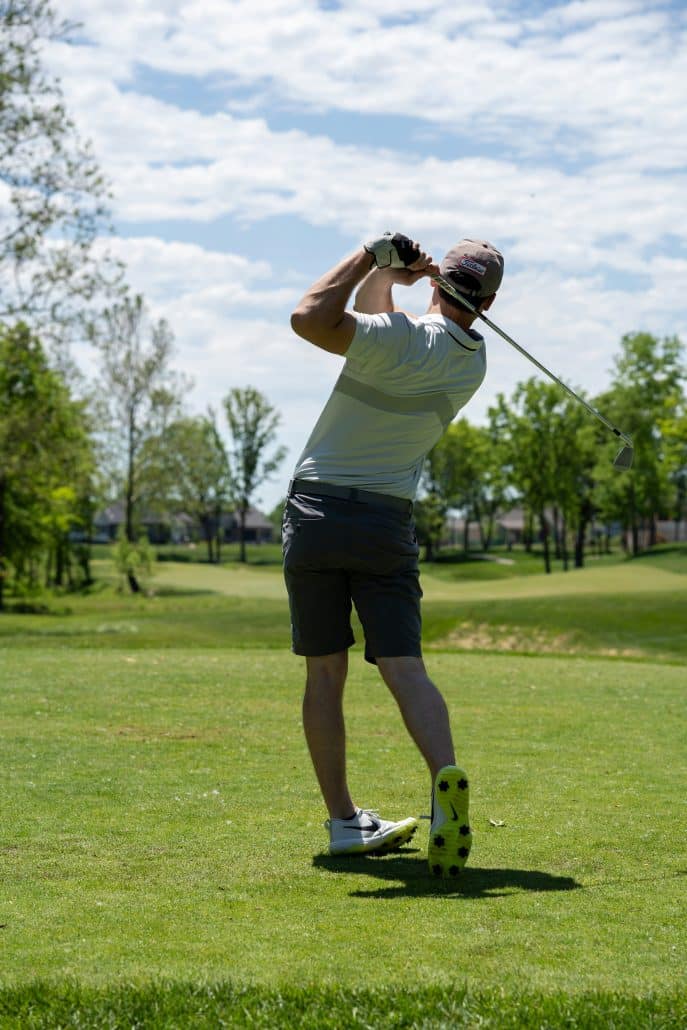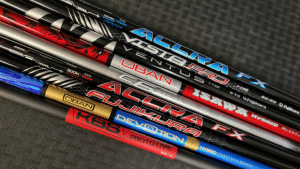When it comes to precision on the course, few factors are more overlooked than golf shaft length—yet it plays a crucial role in shot accuracy. Whether you’re consistently pushing drives to the right or struggling to find the sweet spot on your irons, your shaft length could be the silent culprit. In this post, we’ll break down how shaft length affects swing mechanics, contact consistency, and directional control. By understanding the science behind the fit, you’ll be one step closer to a setup that helps you hit more fairways and stick more greens.
The Crucial Role of the Golf Shaft
Often nicknamed the ‘engine of the club,’ the golf shaft is fundamental in determining how effectively the power and precision of your swing are transferred to the ball. While factors such as clubhead design and grip are significant, the shaft’s length is a determining factor in shot accuracy. A mismatch in shaft length can make the difference between landing on the green and getting lost in a sand trap.
Factors Influencing Golf Shaft Length
Several factors determine the ideal length of a golf shaft. These include the player’s height, arm length, swing speed, and personal preference. A standard golf shaft might not cater to every player’s specific needs, and understanding these nuances can inform a better choice for your game.
Player’s Height
Your height is one of the primary determinants for the appropriate shaft length. Taller players typically benefit from longer shafts, while shorter players might find greater accuracy with a shorter shaft. It becomes essential to match your body measurements with the correct shaft length to optimize your performance.
Arm Length
Similar to height, the length of your arms influences the shaft length that will work best for you. Interestingly, a taller player with proportionately shorter arms might require a different shaft length than a player of the same height but with longer arms. Here, the key is balance to ensure comfort and precision in every swing.
Swing Speed
Swing speed can also influence your decision regarding shaft length. Players with faster swing speeds might gain more control with a slightly shorter shaft, while those with slower speeds could benefit from additional length for extra leverage and power.
Personal Preference
Ultimately, personal preference cannot be discounted. Some players may favor a particular feel or feedback from their clubs, making it crucial to test various shaft lengths to identify what feels right. The right fit should inspire confidence and facilitate a natural, controlled swing.
The Mechanics of Shaft Length and Golf Swing
To explore how shaft length impacts your accuracy, it’s pertinent to dive into the mechanics of the golf swing. Your swing is a complex motion that hinges on timing, control, and force distribution—all of which are influenced by the shaft length of your club.
Swing Arc
The length of the shaft directly impacts the swing arc. A longer shaft creates a broader arc, which can generate more clubhead speed and potentially more distance. However, this can also introduce more variables, making it harder to control direction. Conversely, a shorter shaft results in a tighter arc, which many players find offers greater control and precision, albeit with reduced distance.
Balance and Control
Balance during the swing is vital. A shaft that’s too long can throw off your balance, leading to inconsistencies and off-center strikes. On the other hand, a shaft that’s too short might make you feel cramped, reducing your control over the club. Striking the perfect balance is essential for maintaining control, especially under pressure.
Impact Position
The right shaft length ensures that your golf swing reaches its optimal impact position. This position is where the clubface meets the ball squarely, ideally resulting in a straight shot. When your shaft length is off, it can lead to impacts that are too early or too late, causing hooks or slices.

Pros and Cons of Various Shaft Lengths
Selecting the right shaft length can be intimidating due to the myriad of options. To make this decision easier, let’s compare the advantages and disadvantages of both shorter and longer shafts.
Advantages of Longer Shafts
- Increased Distance: The most significant advantage of a longer shaft is the potential for increased distance due to a wider swing arc.
- Higher Launch: Longer shafts can help achieve a higher launch angle, which might be beneficial on longer holes.
Disadvantages of Longer Shafts
- Reduced Accuracy: The flip side of longer shafts is a possible decrease in accuracy. Minor misalignments are exaggerated, making it harder to control the ball’s direction.
- Potential for Off-Balance Swing: Longer shafts can affect your balance during the swing, which is why they demand better swing mechanics.
Advantages of Shorter Shafts
- Improved Accuracy: Shorter shafts generally lead to more accurate shots because they provide better control over the clubface.
- Better Balance and Control: Players often find that shorter shafts offer superior balance and easier control, leading to more consistent swings.
Disadvantages of Shorter Shafts
- Potential Loss of Distance: A tighter swing arc may result in a slight loss of power and distance.
- Limited Launch Angle: Shorter shafts may require adjustments in technique to achieve the desired launch without sacrificing accuracy.
Customizing Your Golf Shaft for Accuracy
An intricate understanding of how shaft length impacts your shots can help you tailor your clubs for maximum efficiency. Custom fitting is an exciting option many golfers turn to for a personalized experience.
The Significance of a Custom Fitting
Custom fitting involves tailoring your clubs precisely to your height, arm length, swing speed, and style. Professionals employ sophisticated equipment to analyze your swing and recommend the optimal shaft length. This tailored approach ensures your clubs are perfectly suited to your body mechanics and playing style, maximizing both distance and accuracy.
Custom Fitting Process
- Assessment of Physical Dimensions: Custom fittings begin with a detailed assessment of your height, wrist-to-floor measurement, and arm length.
- Swing Analysis: Your swing speed and tempo are measured to determine the best type of shaft for your game.
- Trial and Error: You might test several different lengths to find the one that provides the best fit and feel.
- Final Measurements: Once a preferred length is determined, precise measurements are taken to craft your custom shafts.
DIY Adjustments
If a professional fitting isn’t feasible, some adjustments can be made on your own. Use your own judgment to experiment with different shaft lengths by adjusting your grip along the club and monitoring the resulting shots. A simple test under controlled conditions can reveal much about what length best suits your game.

Technological Advances in Golf Shafts
Ever-evolving technology has led to remarkable innovations in golf shafts. Improved materials and design approaches help customize shaft length while balancing power and control.
Advanced Materials
Modern constructions use lightweight materials such as carbon fiber and advanced alloys, allowing manufacturers to extend the shaft length without increasing its weight significantly. This allows for greater distances while maintaining better control.
Variable Length Technology
Some brands offer variable-length shaft technology. This innovative approach uses adjustable systems that allow you to alter the shaft’s length on the fly. While not standard across all clubs, these can be a fun and adaptable option for those looking to experiment without constantly changing clubs.
Conclusion: Finding Your Perfect Shaft Length
Discovering the ideal golf shaft length necessitates a blend of scientific insight and personal preference. Through understanding your game, analyzing your swing, and sometimes with professional assistance, you can select the right shaft length to improve shot accuracy. Whether your goal is to bolster your consistency or achieve a laser-focused drive, the perfect shaft length can be a transformative asset on the course.
Remember, the shaft is the unsung hero of your golf club, turning potential energy into the kinetic force that connects you to the ball. Dial it in correctly, and you’re not just improving your accuracy—you’re honing your entire game.











